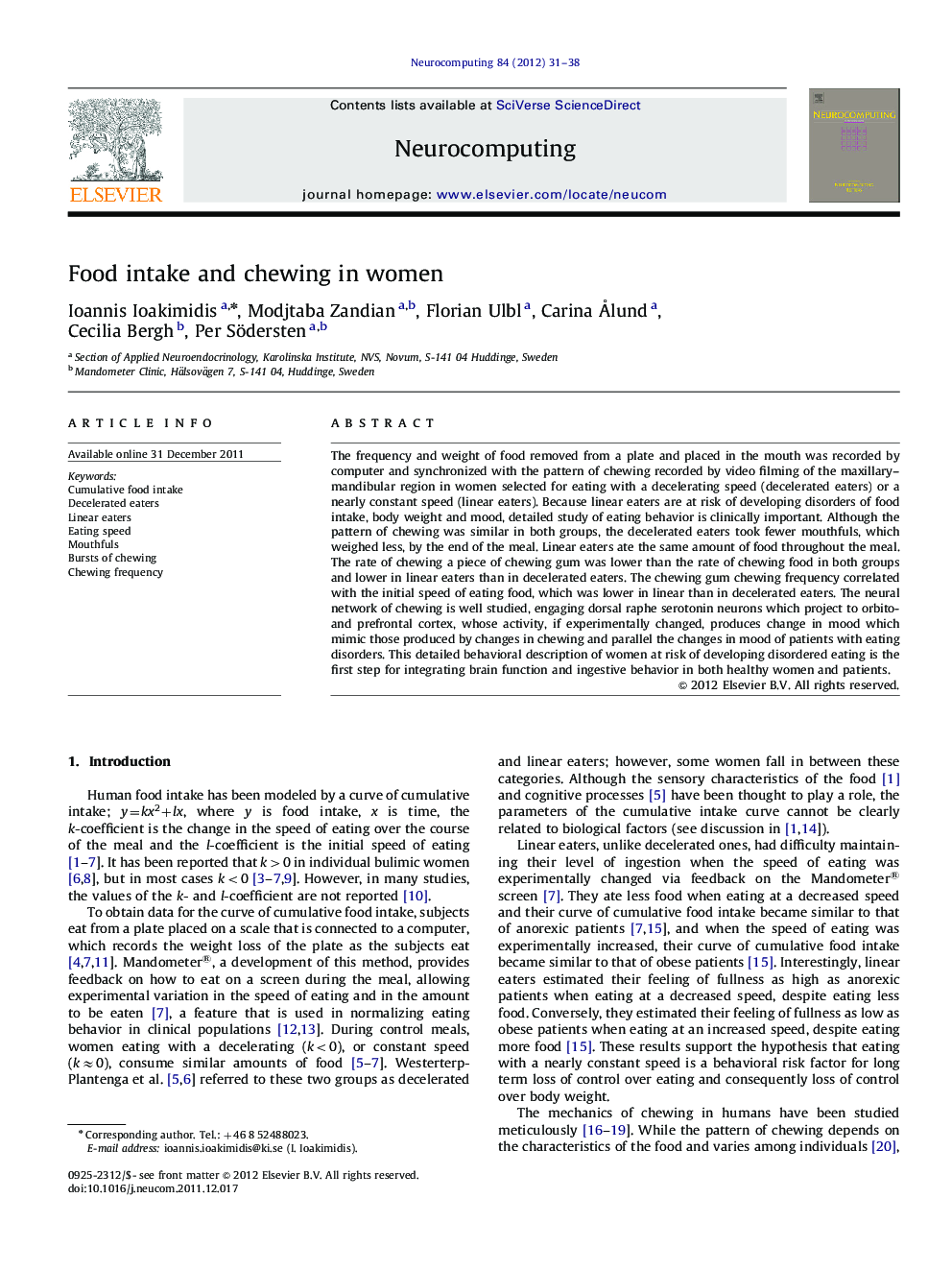| Article ID | Journal | Published Year | Pages | File Type |
|---|---|---|---|---|
| 6866924 | Neurocomputing | 2012 | 8 Pages |
Abstract
The frequency and weight of food removed from a plate and placed in the mouth was recorded by computer and synchronized with the pattern of chewing recorded by video filming of the maxillary-mandibular region in women selected for eating with a decelerating speed (decelerated eaters) or a nearly constant speed (linear eaters). Because linear eaters are at risk of developing disorders of food intake, body weight and mood, detailed study of eating behavior is clinically important. Although the pattern of chewing was similar in both groups, the decelerated eaters took fewer mouthfuls, which weighed less, by the end of the meal. Linear eaters ate the same amount of food throughout the meal. The rate of chewing a piece of chewing gum was lower than the rate of chewing food in both groups and lower in linear eaters than in decelerated eaters. The chewing gum chewing frequency correlated with the initial speed of eating food, which was lower in linear than in decelerated eaters. The neural network of chewing is well studied, engaging dorsal raphe serotonin neurons which project to orbito- and prefrontal cortex, whose activity, if experimentally changed, produces change in mood which mimic those produced by changes in chewing and parallel the changes in mood of patients with eating disorders. This detailed behavioral description of women at risk of developing disordered eating is the first step for integrating brain function and ingestive behavior in both healthy women and patients.
Related Topics
Physical Sciences and Engineering
Computer Science
Artificial Intelligence
Authors
Ioannis Ioakimidis, Modjtaba Zandian, Florian Ulbl, Carina Ã
lund, Cecilia Bergh, Per Södersten,
